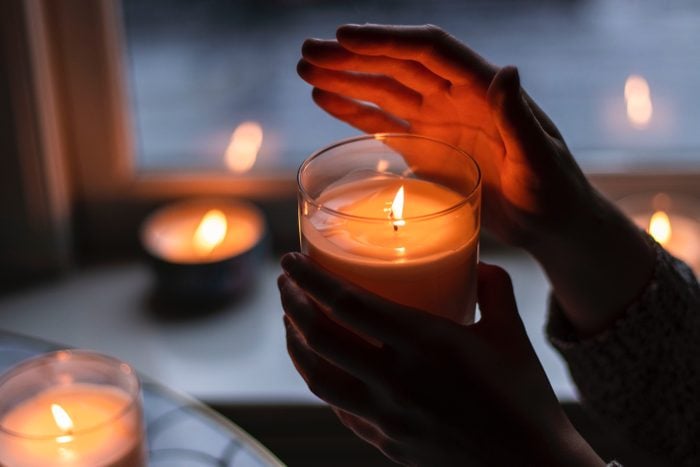Where Does Candle Wax Go When You Burn a Candle?
Updated: Jan. 07, 2022

It looks like magic, but science can explain the disappearing act. Here's where candle wax goes after it melts.
With their welcoming glow, scent and ability to make a house a home, candles are among a homeowner’s favorite decor. How many times have you lit a candle in the kitchen, before a relaxing bath or atop a birthday cake? The answer is probably a lot.
You strike a match, light the wick and let it burn.
Where does candle wax go, though? At first glance, it seems like magic, but the science of a burning candle bears a little more thought.
Where Does Candle Wax Go?
We’ll start at the wick. You strike a match, touch it to a candle wick and you’ve got yourself a flame. Give it a few seconds, and the heat from that flame will begin to melt the wax around the base of the wick. The candle shrinks in height as the wax melts, but there’s a reason that it doesn’t end up liquefied on your kitchen island. According to The New York Times, most of a candle’s matter actually ends up evaporating into the air.
As the wax starts to melt and puddle around the candle’s cotton wick, it actually travels upward. The wick soaks it up, and it eventually evaporates into the air as either carbon dioxide or water vapor after it burns. Meanwhile, the existing wax continues to melt and feed the flame, allowing your candle to burn until you blow it out for the evening.
If your candle has reached the point of no return, here’s how to get candle wax out of a jar.
Why Does the Flame Stutter?
People who burn candles frequently know that the process works best if you trim the wick. If a wick is too long, the combustion process sometimes gets thrown off, says the candle company Homesick.
A longer wick often soaks up too much melted wax, causing your flame to burn incorrectly and resulting in it stuttering. This usually can happen in the few seconds after you light a candle wick, as the process is beginning. However, if the stuttering flame doesn’t settle in after a few seconds, you should blow it out and trim the wick before trying again.
Here’s how to make your candles last longer.
Up Next: How to Smooth Your Candle’s Surface to Fix Bumps and Cracks
